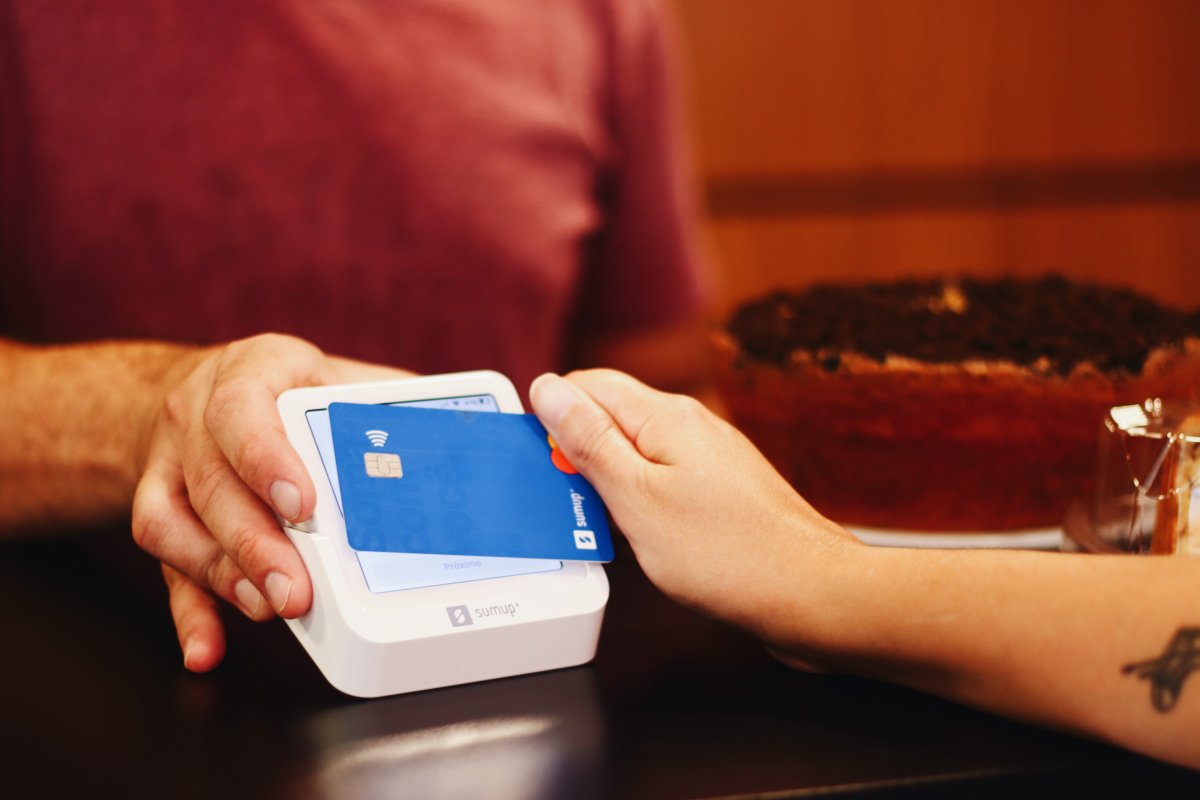A Point of Sale (POS) system is an integrated software and hardware solution that streamlines the operations of a restaurant. Essentially, it functions as the nerve centre of your establishment, managing everything from taking orders and processing payments to inventory control and data analytics.
For hospitality business owners striving for operational efficiency, a robust POS system is not merely a convenience but an absolute necessity. But which POS system is the best?
In this article, I’ll examine the top restaurant, bar and pub POS systems available in the UK market, dissecting their features, pricing structures, and respective advantages and disadvantages.

Square Reader (2nd Generation)

EPOS Now Complete Solution

YUMAPOS

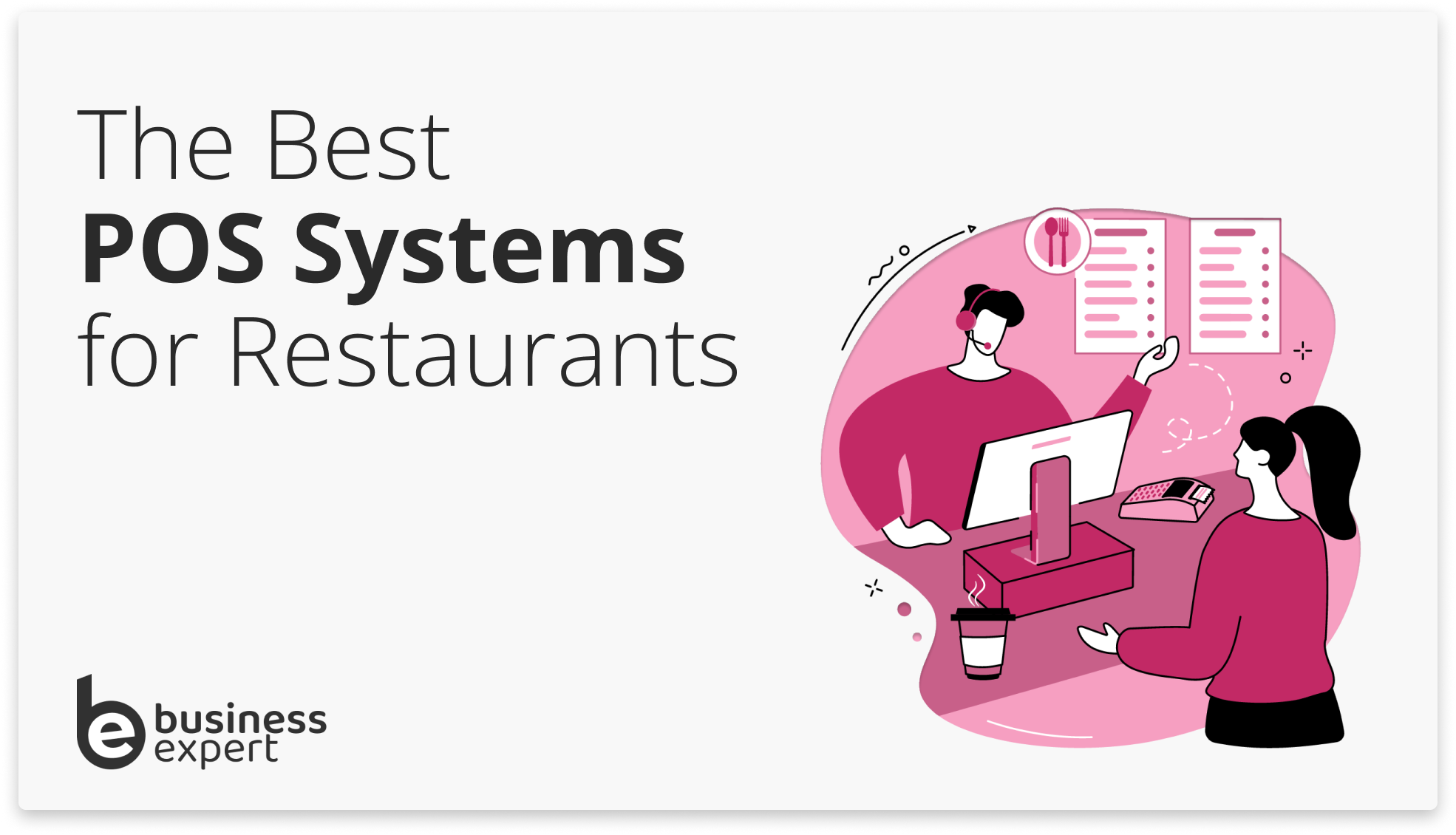
Best Hospitality POS Systems of 2025
| Brand | Key Features | Hardware Options | Pricing Considerations | Ideal For | Visit |
|---|---|---|---|---|---|
| Square | No contract options. User-friendly, table management, online ordering, loyalty programs | Mobile card readers, countertop POS terminals | Affordable monthly software fees starting at £0/month, competitive transaction fees (1.75% for card-present payments) | Anything from popups to Large Chains | Visit Square |
| YumaPOS | One simple fixed-fee gets you everything, including hardware | Card Readers, POS terminals, | Very competitively priced POS system with a core focus on hospitality | Small Cafes Right up to Large Chains | Visit YumaPOS |
| Takepayments | Good entry-to mid level POS with responsive customer service | From small card readers to all in one counter top terminals, with super fast printer | The TPOS counter system is £55 per month for retail, fully integrated with the tPOS software. Transaction fees range between 0.3% to 2.5% | Small Restaurants | Visit Takepayments |
| Zettle | Simple to set up, mobile card reader, real-time sales insights, specialist POS integration | Card readers, POS terminals, customised kits | No monthly fees, 1.75% transaction fees | Popups, Market Stalls & Startups | Visit Zettle |
| Epos Now | Scalability, front and back-of-house sync, automated reporting, inventory efficiency | Complete systems, tablet systems, handheld options | Hardware costs from £399+, subscription fees from 325/month | Any restaurant with turnover of 10k per month or more up to multi chain | Visit Epos Now |
| Lightspeed | Highly customisable, unified online/takeout/dine-in ordering, robust inventory management, accounting integrations | Countertop POS terminals, receipt printers, cash drawers | Monthly fees from $59 – $339, additional costs for addons like online ordering and inventory management | Established restaurants with 1 or more locations. Michelin *’s | Visit Lightspeed |
| Clover | Customisable software, app marketplace, layered security, real-time reporting | All-in-one POS terminals (Clover Station, Clover Mini) | Hardware costs from £400 – £1,300, software fees from £20/month, transaction fees of 2.3% + £0.08 | Full-service restaurants | Visit Clover |
7 Best Restaurant POS Systems in the UK
The following top POS systems are the best I’ve found from a huge shortlist. They represent different ranges on a spectrum of price and complexity. Of course, there is no single ‘best’: you’ll have to find which meets the needs of your particular business.
Square is a popular choice for many small and large businesses who want a solution that scales with their needs. Eposnow captures a large part of the mid market in the UK with their popular all-in-one solutions and fair pricing. Lightspeed is perhaps the most specialist offering with its complex software package that works with Apple Devices.
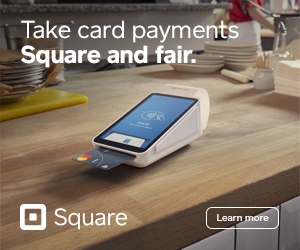
Square: Best POS Overall
Square is a popular simple POS system for restaurants, known for its user-friendly interface and affordable pricing. It offers features that can help you streamline operations, increase sales, and improve customer loyalty. You’ll pay 1.75% in transaction fees for in person sales.
- Ideal for large restaurants and chains
- Advanced features
- Scalable solutions
- User-friendly interface
- Affordable pricing plans
- Table management and online ordering capabilities
- Limited advanced reporting features

Square offers a free plan for businesses that are just getting started, and its paid plans are extremely price-competitive. Square is also scalable to an extent, meaning it can adapt .
Square also offers a variety of well-priced hardware options, including mobile card readers and countertop POS systems.
The Square for Restaurants software has a great set of features which include table management, online ordering, and loyalty programs. Square also offers a variety of integrations with popular third-party apps, such as delivery services and accounting software..
Square for Restaurants POS Pricing
Square’s pricing includes hardware costs, with prices starting from £168 for a basic stand and card reader, and up to £599 for an advanced terminal. Monthly fees begin at £0, increasing with additional features. Transaction fees are 1.75% for card-present and 2.5% for keyed-in or online transactions.
| Transaction Type | Fee |
|---|---|
| In-Person Transaction | 1.75% |
| Online Payment (UK cards) | 1.4% + 25p |
| Online Payment (Non-UK cards) | 2.5% + 25p |
| Manually Keyed-In Transaction | 2.5% |
Pros:
- User-friendly: Simple interface.
- Affordable: Varied, cost-effective plans.
- Comprehensive: Includes essential restaurant features.
- Flexible: Customisable to restaurant needs.
- No contract: Monthly payments, no long-term tie-ins.
Cons:
- Limited reporting: Less comprehensive reporting compared to other POS systems; third-party software may be needed.
- Customer support: Reports of challenges in reaching Square support.
- Transaction fees: Higher fees for high sales volumes.
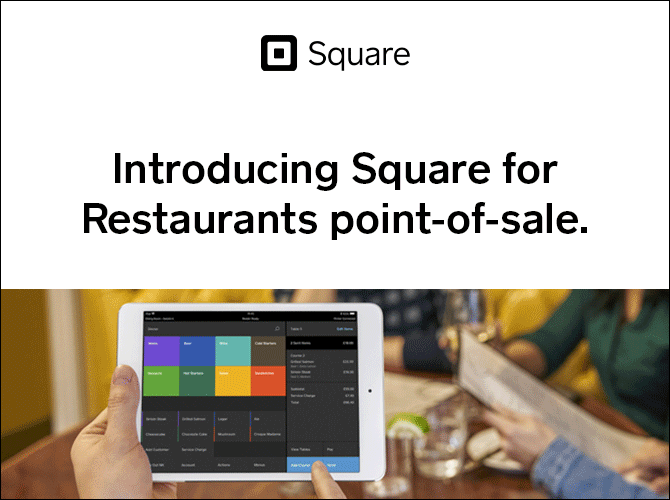
YumaPOS: Best Priced Hospitality POS System
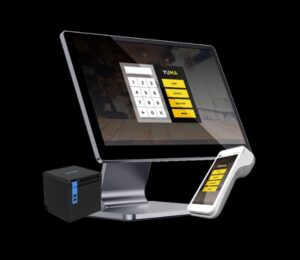
YumaPOS, established in 2015 in the UK, specialises in payment and POS systems for the retail and hospitality sectors, boasting a presence in over 3,000 stores across 13 countries. The system stands out for its competitive pricing and inclusive package, offering a comprehensive POS solution without hidden costs.
With a single subscription of £49.99, businesses receive a full EPOS system, including hardware, making YumaPOS one of the most cost-effective providers in the UK market. It’s particularly designed for retail and hospitality, featuring custom floor plans, kitchen notes, and supports scalable business growth without insisting on in-house payment processing.
YumaPOS Pricing
- Subscription Fee: £49.99/month (includes hardware)
- Additional Costs: None for hardware; optional for payment processing and online ordering
- Contract Length: Minimum 24 months
Pros
- Competitive Pricing: Undercuts competitors with an all-inclusive monthly fee
- No Additional Hardware Costs: Offers complete EPOS setup within the subscription
- Industry-Specific Features: Tailored for retail and hospitality with custom floor plans and kitchen notes
- Scalable: Supports business growth and multi-site management
- Flexible Payment Processing: Does not mandate the use of its payment processing services
- Excellent Support: Provides installation, training, and 24/7 support, praised in Trustpilot reviews
Cons
- Long-Term Contracts: Requires a minimum 24-month commitment
- Feature Overload: The extensive functionality might overwhelm some users
- Limited Business Suitability: Best for retail and hospitality, potentially less so for other niches
- Integration Limitations: While offering many integrations, it may not cover all third-party software needs
Takepayments: Best Entry-Level Restaurant POS System
Takepayments is a UK-based payments specialist offering their own card machines and POS systems. They are someone you want to consider if you’re too big for something like Square but perhaps not ready for something like Lightspeed, with its advanced functionalty.
The system’s simple EPOS functionality and intuitive design ensure that even those with minimal technical expertise can operate it efficiently. Integrated card payments further streamline the process by allowing automatic transfer of totals to the card machine, reducing the chance of errors.
- Integrates sales, stock, and employee performance management.
- Provides comprehensive insights into sales trends and stock efficiency.
- Offers dedicated assistance for setup and ongoing operational support.
- Includes order and pay at table, payment app, pay by link, and phone payments for improved customer service.
- Allows integration with peripherals like mobile card machines, cash drawers, and barcode scanners.
Takepayments POS Pricing
The TPOS system for hospitality businesses includes an initial setup fee of £250 + VAT and a monthly fee of £55. Transaction fees are customised between 0.3% to 2.5%, allowing room for negotiation on more favourable rates for businesses with high-volume transactions.
Pros
- Customisable Fees: Tailored transaction fee structures.
- Robust Support: 24/7 customer support for the hospitality sector.
- Advanced Payments: Includes mobile and pay-at-table options.
- Quick Funds Access: Offers next-day settlement for improved cash flow.
Cons
- Initial Setup Cost: £250 + VAT for TPOS setup, a notable upfront cost.
- Contract Terms: 18-month standard duration, possibly restrictive.
- Online Store Integration: Limited e-commerce capabilities.
Zettle: Best POS for Paypal Integration
Zettle, owned by Paypal, is another simple contract free option which you could compare to Square. It’s useful for a pop up or market stall, but not for a full service hospitality business.

- Simple to set up and user-friendly
- Portable card reader ideal for mobile service
- Real-time sales insights for data-driven decisions
- Seamlessly integrates with specialist POS systems
- Lacks advanced features for complex operations
After testing Zettle by PayPal as a point-of-sale option for food and drink businesses, I find it simple and user-friendly. Its core strengths lie in its ease of setup and its efficient inventory management, both of which could be particularly beneficial for small to medium-sized enterprises.
Zettle streamlines the onboarding process; one can add prices, VAT, and start selling in a relatively short span of time. This simplicity extends to employee training, allowing quick account switches and enabling checkout processes that take mere seconds. If you’re running a busy venue, the speed and ease could be quite advantageous.
Zettle Pricing
Zettle charges a per-transaction fee without contracts or recurring fees, offering a consistent 1.75% rate for card transactions and mobile wallets, including American Express. Other transaction types such as PayPal QR Codes are also charged at 1.75%, while Payment Links and Zettle Invoices incur a 2.5% fee. The latter options are only available to sellers who registered with Zettle before 8 May 2023.
| Pricing Component | Cost (£) | Remarks |
|---|---|---|
| Transaction Fees | ||
| Card Transactions | 1.75% | Per transaction for major cards and mobile wallets |
| PayPal QR Codes | 1.75% | |
| Payment Links | 2.5% | |
| Zettle Invoice | 2.5% | For accounts registered before 8 May 2023 |
| Hardware Costs | ||
| Customised Store Kits | From £189 | Excl. VAT, delivery fees apply |
| Terminal | From £149 | Excl. VAT, delivery fees apply |
| Card Reader | From £29 | For new business users, excl. VAT, delivery fees apply |
Pros
- Affordable: Zettle offers no monthly fees and competitive transaction rates.
- Easy to Use: Features a user-friendly interface.
- Portable: Lightweight card reader for multi-area service.
- Comprehensive: Includes table management, online ordering, and inventory tracking.
Cons
- Limited Customer Support: Zettle’s support may not match other POS systems.
- Limited Reporting: Less comprehensive reporting; third-party software might be necessary.
- Not for Large Restaurants: Better suited for small to medium-sized establishments; may lack features for larger or complex operations.
Epos Now Restaurant POS System
If you’re a medium to larger restaurant/ bar or a chain of premises, Eposnow is definitely one to shortlist. This UK-based company, founded in Norwich, now covers 64 countries and supplies over 65,000 businesses. They are the largest supplier of EPOS for the UK’s SMB sector.
Their restaurant POS:
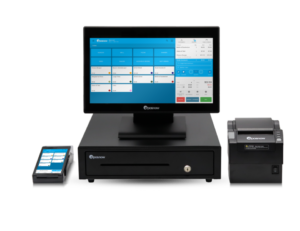
- Is built to scale across multiple locations
- Offers Front and back-of-house synchronisation
- Has Automated monthly performance reporting
- Promotes table turnover and inventory efficiency
- Easily connects to major ordering and delivery apps
Epos Now make systems with a lot of power and flexibility. You’ll get front and back-of-house synchronisation as standard, kitchen management capabilities, and an integrated workplace management system known as Deputy. Integrate with delivery apps like Deliveroo, utilise a clocking in/out feature for staff, and generate automated monthly reports for employee performance.
Epos Now Payments lets you take up to 650 at-table payments on a single charge, an incredibly handy function when things get busy. If you add in Epos Now Bill Pay, you can also speed up table turnover by 20%, which is essential for those peak hours.
Stock management is yet another area where Epos Now shines. With low-stock warnings and the ability to automate purchase orders, it takes a lot of the guesswork out of inventory management. I could see this being invaluable in managing multiple restaurant locations.
Epos Now Pricing
Epos Now offers its system at a reduced price of £325, down from £899, with the requirement that customers use their card payments processing, typically charged at a 1.6% transaction rate.
| System Type | Pricing Options | Included Features |
|---|---|---|
| Complete System | £399 total or £25/month | Pro-C15 terminal, Metal cash drawer, Thermal receipt printer, Installation and set-up. |
| Tablet System (Android) | £399 total (iPad option for £549) | Payment processing, Multiple devices, Multiple locations |
| Handheld System | Available via quote | Booking systems, Payment processing, Courier services, Front and back of house linkage |
Pros:
- Comprehensive Features: Epos Now provides table management, online ordering, inventory tracking, staff management, and customer loyalty programs.
- Flexible and Scalable: Customisable to any restaurant size or type.
- Competitive Pricing: Various affordable plans available.
- Good Customer Support: Expert team ready to assist with any issues.
Cons
- Extra Fees for Advanced Features: Additional costs for certain advanced features.
- Expensive Hardware: Costs can rise with multiple terminals or accessories.
- Unclear Pricing: Reports of unexpected fees.
Lightspeed Hospitality POS System
Lightspeed Hospitality is a powerful specialist ePOS system specifically aimed at the restaurant industry. It’s highly customisable, built to scale, and best suited for an established brand with multiple premises. There’s a reason over 160 Michelin-starred restaurants rely on Lightspeed.
- Highly customisable with scalable pricing tiers
- Unified online, takeout and dine-in ordering
- Robust inventory management and accounting integration
- Accepts wide range of payment types
- Expensive hardware and addon costs
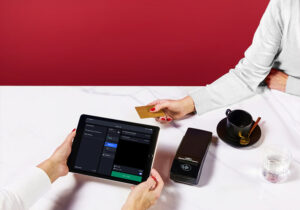
It offers a holistic approach, covering everything from payment processing to inventory management, unlike some competing platforms that focus primarily on transactional capabilities.
One distinguishing feature is its versatility in payment options. While systems like Square emphasise the ease of credit and debit card transactions, Lightspeed goes a step further by accommodating a variety of payment forms, including QR codes, thereby offering an edge in payment flexibility.
Lightspeed goes further than systems like Zettle by PayPal in terms of inventory management. Both offer real-time stock counts and wastage logs, but Lightspeed adds an extra layer by providing menu pricing suggestions. This functionality could make it a more comprehensive choice for restaurant owners keen on optimising their supply chain along with their menu.
Lightspeed Restaurant POS Pricing
| Pricing Tier | Cost (GBP) | Billing Cycle | Ideal For | Additional License Cost (GBP) | Features Included |
|---|---|---|---|---|---|
| Starter | £59 | Annual, billed monthly | 1-2 locations | £33 | Integrated Payments, 24/7 Support, Offline Mode, Basic Reporting |
| Essential | £109 | Annual, billed monthly | 1-15 locations | £33 | All Starter features, Loyalty, Marketplace Integrations |
| Premium | £339 | Annual, billed monthly | 16-500+ locations | £33 | All Essential features, £50 for Online Ordering, £100 for Inventory Management, Real-Time Reporting, Basic API Access, PMS Integration |
| Enterprise | Custom | Custom | Custom | Custom | Tailored Software and Hardware, Unlimited Launch and Consultation, Dedicated Support Team |
Pros:
- Comprehensive Features: Includes extensive restaurant management tools.
- Versatile Payments: Accepts multiple payment methods.
- Inventory Management: Offers real-time tracking and pricing suggestions.
- Unified Service: Combines dine-in, take-away, and delivery on one platform.
- Accounting Integration: Automatically syncs with major accounting software.
- Dedicated Support: Provides personalised onboarding and support.
Cons:
- Complex Setup: Lightspeed may be challenging for those new to POS systems.
- Additional Fees: Advanced features may incur extra costs.
- Expensive Hardware: Costs rise with additional terminals or accessories.
Clover Dining: Best POS for Quick-Service Restaurants
Clover is a POS solution with good hardware, a 30-day trial, and 24/7 phone and email support. As one of the biggest names in the POS industry, they offer all-in-one systems which are designed to get you up and running quickly.
- Robust all-in-one POS hardware options
- Customisable software with app marketplace
- Layered security features
- Real-time sales and analytics reporting
- Proprietary hardware limits flexibility
Their POS solutions look great and are functionally robust, which is useful in a busy catering environment. Their two primary offerings—Clover Station Pro and Clover Mini—are aimed at both full-scale restaurants and smaller environments like cafes
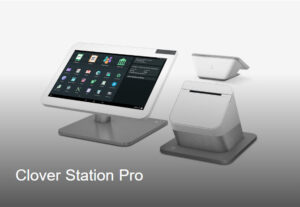
Clover Station Pro is the more comprehensive solution, aiming to be an all-in-one business management system. It not only handles payments locally, internationally, and online, but also offers an intuitive dashboard that allows for efficient inventory tracking, staff scheduling, and more. The device itself is built with a 14-inch high-resolution anti-microbial touchscreen and offers a wide array of hardware, software, and accessories. One standout feature which I like is its shift and staff rota management, making it an excellent choice for businesses with complex staffing needs.
Clover POS Pricing
The upfront cost of Clover hardware varies depending on the model you choose.
The Clover Station Pro is the more advanced and comprehensive system, and it costs around £1,000 to £1,300. The Clover Mini is designed for smaller operations and costs around £400 to £600. These costs can fluctuate based on any additional accessories or features you need.
Clover charges a transaction fee of 2.3% + £0.08 per sale.
You won’t find much pricing information on their website, though. Like many POS companies, they have multiple pricing tiers and prefer to quote on a case-by-case basis.
Pros:
- Customisation: Tailor hardware, software, menus, reports, and receipts to your needs.
- Scalability: Easily add features like online ordering, gift cards, and loyalty programs.
- User-Friendly: Simple interface requiring minimal staff training.
- Integrated Payments: Direct payment processing without separate terminals.
- Real-Time Analytics: Monitor sales, inventory, and costs with detailed analytics.
- Inventory Management: Advanced tracking and alerts to minimise waste and optimise ordering.
Cons:
- Cost: High initial and ongoing fees, a concern for small businesses.
- Proprietary Hardware: Switching systems incurs extra hardware costs.
- Limited Offline Functionality: Basic offline use; advanced features need internet.
- Transaction Fees: Competitive, yet significant for high-volume businesses.
- Learning Curve: User-friendly but requires time to master all features.
- Software Compatibility: Broad app selection but potential third-party software issues.
What are POS Systems for Hospitality Businesses?
POS systems for hospitality businesses, such as restaurants, bars, and pubs, provide comprehensive solutions to streamline operations. These systems integrate various functions, allowing businesses to manage orders, payments, inventory, and staff all from a single interface.
Key features of a POS system for hospitality include:
- Order Management: Efficiently handles both in-house and online orders.
- Payment Processing: Supports various payment methods, including credit/debit cards, cash, and mobile wallets.
- Inventory Management: Monitors stock levels and triggers automatic reordering when needed.
- Reporting: Generates detailed insights on sales, inventory, and business performance.
- Table Management: Assigns tables and tracks orders at each table.
- Online Ordering: Enables customers to place orders for pickup or delivery.
- Loyalty Programs: Encourages repeat business through customer loyalty programs.
- Staff Management: Tracks employee hours, manages payroll, and generates performance reports.
Additional useful features:
- Multi-Payment Support: Accommodates various payment methods.
- Reservations Management: Helps manage reservations and optimise customer flow during peak hours.
- Menu Customisation: Allows for easy modification of menus to meet customer needs.
- Age Verification: Ensures legal compliance, particularly when serving alcoholic beverages.
- Offline Mode: Maintains business continuity during internet outages.
- Remote Management: Provides remote access to monitor operations.
- Reporting and Analytics: Offers insights through detailed reporting and analytics.
- Customer Relationship Management (CRM): Builds and maintains customer relationships, with features like personalised interactions and loyalty programs.
The Benefits of a Restaurant & Bar POS System
Here are the primary benefits that you can expect when integrating a POS system into your hospitality operations:
- Increased efficiency: POS systems streamline order management and payment processing, significantly reducing the time taken for these essential functions. Quick and accurate transactions enable staff to serve more customers in less time, optimising both resource allocation and revenue generation.
- Reduced errors: POS systems automate key processes such as order-taking and inventory management, reducing the likelihood of human errors. This enhances operational accuracy and improves customer satisfaction by minimising errors in orders or billing.
- Improved customer service: POS systems offer features such as table management and online ordering, making it easier to provide a personalised and convenient dining experience. This improves customer satisfaction and encourages repeat visits.
- Better insights for decision-making: POS systems generate comprehensive reports on various performance metrics, including sales trends and inventory levels. This analytical capability enables restaurant owners to make informed decisions aligned with their business objectives.
- Enhanced staff management: Features such as time-tracking and payroll management simplify administrative tasks and enable better performance assessment.
- Versatility and scalability: POS systems are highly adaptable, catering to the specific needs of a restaurant. Whether integrating with online delivery platforms or accommodating multi-location operations, POS systems can evolve in line with business growth.
Price for POS System for Restaurants, Bars & Pubs
The cost of a POS system for restaurants can vary considerably depending on a number of factors, including features, scalability, and pricing model. Here is a breakdown of the key components that contribute to the overall price:
- Hardware: The hardware required for a POS system can include touch-screen terminals, receipt printers, cash drawers, and barcode scanners. The cost of hardware can range significantly, depending on the specifications and the number of terminals required.
- Software: POS software is often priced through a licensing model, which could be either a one-time purchase or a recurring subscription. Subscription models may offer more flexibility and are generally updated more frequently, but they can incur ongoing costs.
- Customisation: Depending on the restaurant’s specific requirements, additional customisation may be necessary. This could involve programming for special features or integrations with existing systems. Customisation typically comes at an additional cost.
- Implementation and training: The process of setting up the POS system and training staff to use it effectively can also be costly. Some vendors offer free initial training and installation, but others may charge separately for these services.
- Maintenance and support: Post-implementation, there may be costs associated with maintaining the system, including software updates and hardware repairs. Many vendors offer maintenance and support packages, which can be a wise investment to ensure uninterrupted service.
- Additional modules: As the business grows, the need for additional modules like advanced reporting, inventory management, or multi-location support may arise. These modules usually come at an extra cost but can offer significant advantages in terms of operational efficiency and data insights.
Total Cost of Ownership (TCO)
It is important for restaurant owners to consider the Total Cost of Ownership (TCO), which includes not only the initial investment but also the ongoing costs such as maintenance, software updates, and any additional modules that may be required in the future.
Choosing a Multi-location Hospitality POS System
Choosing a POS system for a multi-location restaurant can be complicated, as the system must be scalable, consistent, and efficient across multiple sites. Here are key considerations to bear in mind:
- Centralised management: The POS system should allow for a unified view and control of all locations from a single dashboard.
- Data aggregation and reporting: The POS system should be able to aggregate data from multiple locations into consolidated reports, providing a macro-level view of performance metrics.
- Inventory management: The POS system should facilitate centralised inventory management, with features such as automated reordering, supply chain tracking, and real-time stock updates accessible for all locations.
- Scalability: The POS system should be able to scale with your business, accommodating the addition of new locations with ease.
- Integration capabilities: The POS system should seamlessly integrate with existing software solutions, such as accounting, CRM, and online ordering platforms.
- Staff training and usability: The POS system should have a user-friendly interface that requires minimal training.
- Reliability and support: The POS system should be reliable and offer robust customer support, including 24/7 assistance and regular software updates.
- Compliance and data security: The POS system should be able to handle cross-jurisdictional complexities and maintain stringent data security measures.
Hospitality POS systems vs. Traditional Cash Registers
Traditional cash registers have been the cornerstone of retail and restaurant transactions for decades. They are simple to use, focusing on basic cash handling and sales recording.
In contrast, Restaurant POS systems are comprehensive solutions that integrate sales, customer management, inventory tracking, and analytics into one platform. These systems are designed to handle the complex needs of the modern restaurant business, offering features such as table management, order tracking, kitchen communication, and detailed reporting. POS systems also support various payment methods, including credit/debit cards, mobile payments, and online orders, enhancing the customer experience.
Restaurant and Hospitality POS Systems: FAQs
A Point of Sale (POS) system in restaurants and hospitality is a combination of software and hardware that manages sales transactions, tracks inventory, processes payments, and assists in overall business management.
POS systems track inventory in real-time, alerting you to low stock levels and helping manage reordering processes. It can also track ingredient usage and help in menu planning based on inventory.
Yes, many POS systems include employee management features like scheduling, time tracking, and performance monitoring, which help streamline staff management.
Most modern POS systems offer cloud-based access, allowing restaurant owners and managers to view reports, sales data, and other important information remotely.
Consider your business size, specific needs like tableside ordering, budget, ease of use, integration capabilities, and the provider’s customer support.
While beneficial, POS systems can have downsides like initial setup costs, training requirements for staff, dependence on technology (and thus vulnerability to technical issues), and ongoing maintenance and support costs.
Costs vary widely based on features, size, and provider. Basic systems can start from a few hundred pounds, while more advanced systems might cost several thousand. Monthly fees for software subscriptions or support services may also apply.

